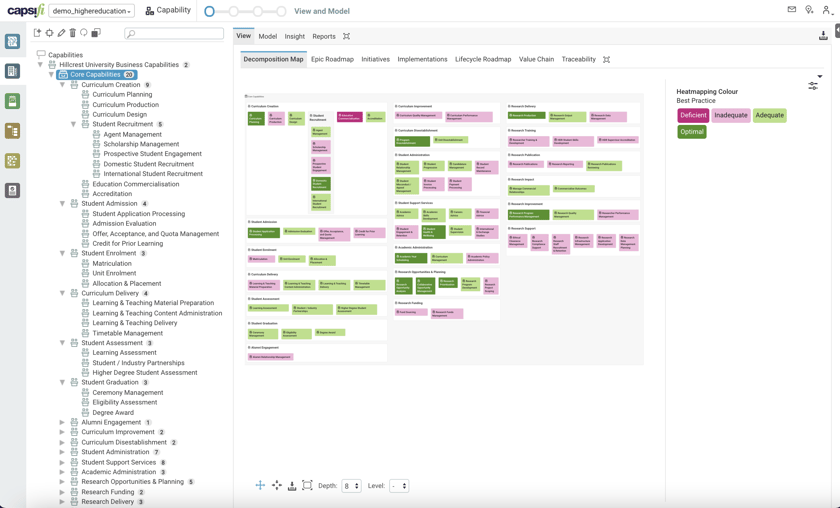Resources library
Telling a Story with Jalapeno Maps

Bring your stakeholders on a structured journey of understandingThe human brain is wired to think in terms of stories. Using storytelling as a way to teach and impart information is nothing new and has its roots in ancient practices across most cultures. The fact that “narrative thinking” is still in active use today is testament to its success as a communication tool. For those of us who regularly interact with people from different domains or with different frames of reference to our own, the value of storytelling as a communication tool shouldn’t come as a surprise. Any time new or complex information is introduced, a successful interaction will follow a similar arc to a standard narrative structure:
Jalapeno’s maps, such as the Capability Map, can be used to communicate a story in this way. The dynamic nature of a Jalapeno Map means that the presentation can evolve along a narrative arc, bringing the audience along on their journey of understanding. Using a Capability Map as an example;
Jalapeno maps are flexible enough to craft many different views and overlays, but having a structured narrative arc to guide how and when to use those views is key to taking your presentations and interactions to the next level. |
Jalapeno MapsJalapeno’s Map views provide a dynamic and diagrammatic representation of any taxonomy within Jalapeno. With heat mapping, visual querying and summary features, Jalapeno Maps are key to illustrating the stories you tell. |